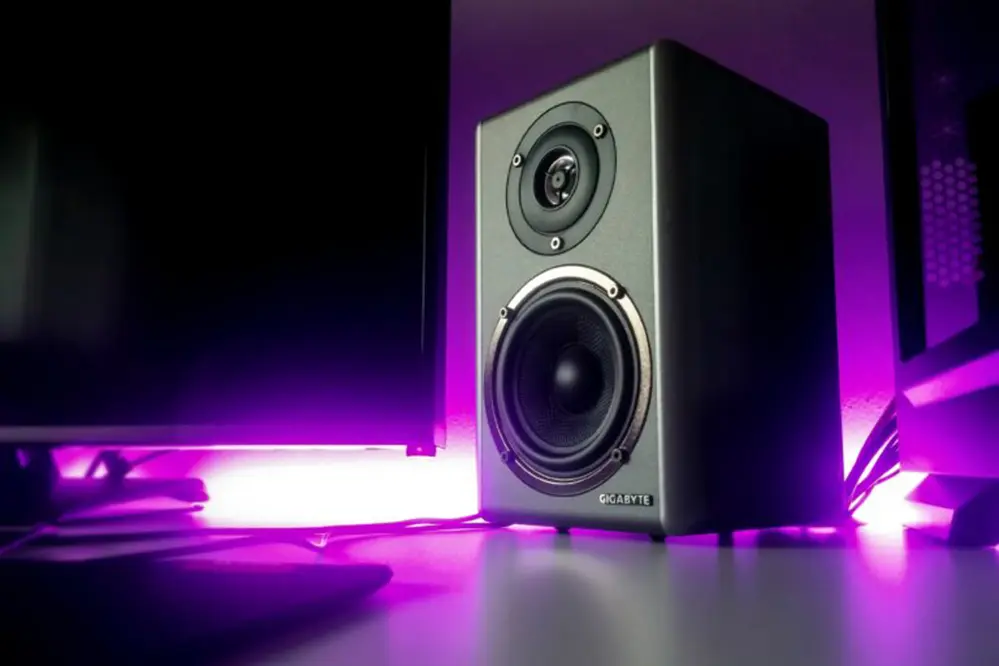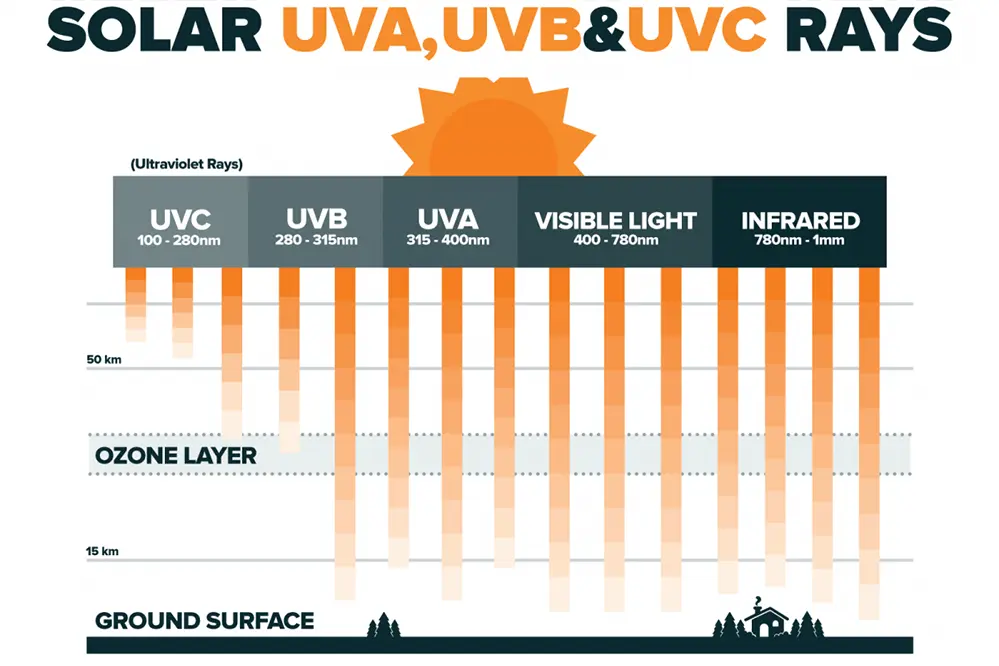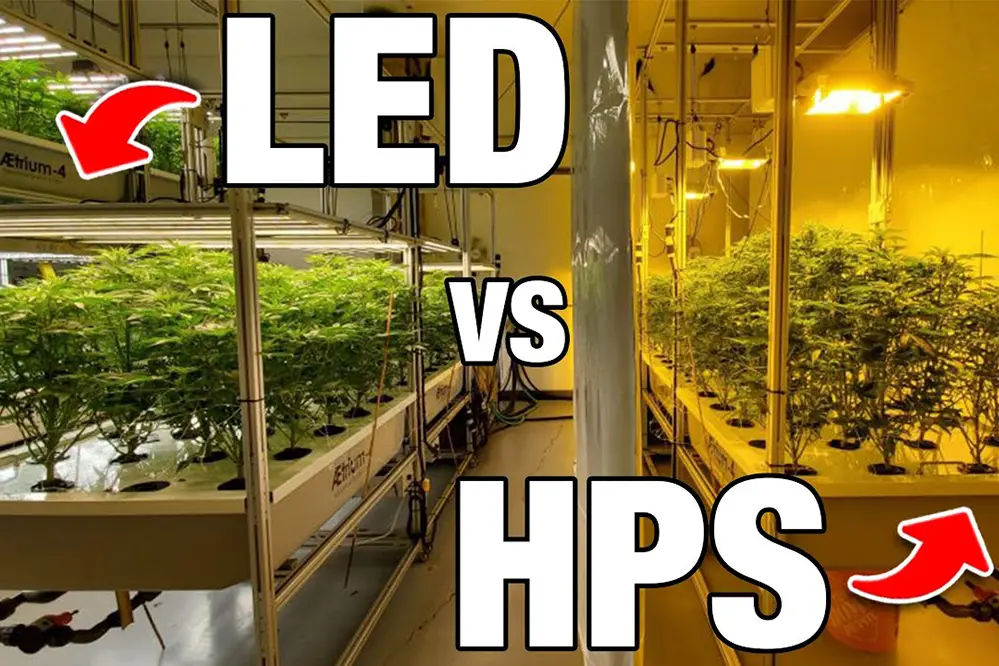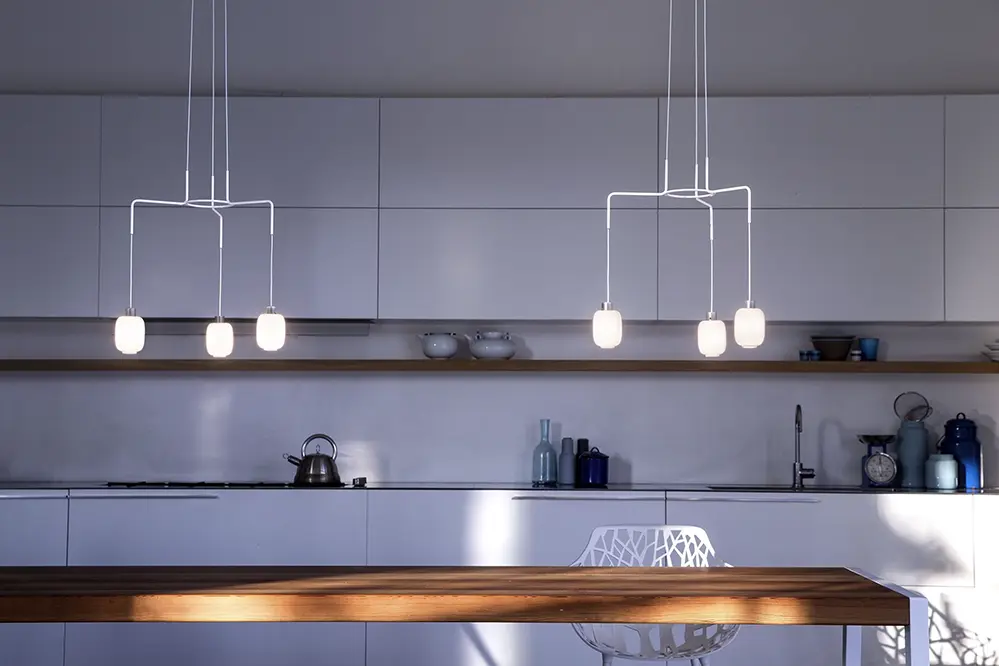In today’s world of advanced technology, the integration of LED lights into our homes and workspaces has become commonplace. However, many have encountered the perplexing issue of buzzing speakers when these lights are in use. If you’re seeking clarity on why this happens, you’re in the right place.
LED lights make speakers buzz due to electromagnetic interference (EMI) caused by the LED’s driver circuitry, which can disrupt audio signals in nearby speakers.
Stay with us as we delve deeper into the science behind this phenomenon and explore practical solutions to eliminate the buzz, ensuring your audio experience remains uninterrupted and enjoyable.
Understanding the Buzz: What Causes It?
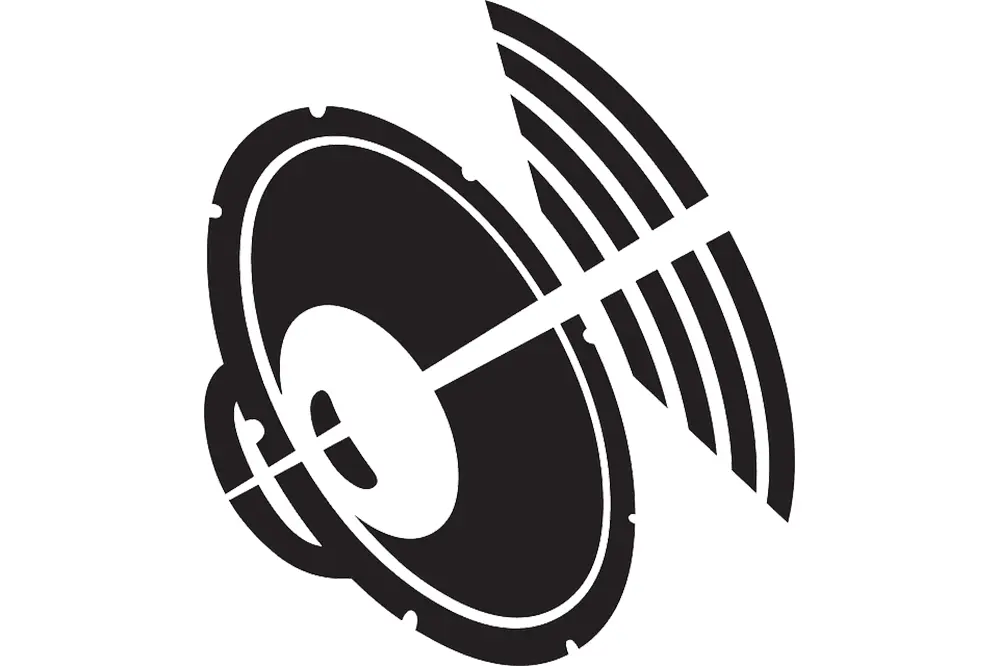
The perplexing phenomenon of LED lights causing speakers to buzz is not a mere coincidence. Instead, it is an interaction that involves electromagnetic interference from LED circuits.
LED lights and speakers may share electrical circuits. This close proximity fosters conditions ripe for interference.
Essentially, modern LED lights incorporate drivers and transformers. These components can emit electromagnetic energy, and without proper rf chokes, this energy can inadvertently affect nearby audio equipment.
At the heart of the interference is the LED’s capacity for rapid, minute voltage fluctuations. Such changes can transmit through power lines, disrupting audio signals.
Moreover, the frequencies generated by LEDs can overlap with those used by audio systems, resulting in audible buzzing. Fortunately, understanding this connection can guide us toward effective solutions.
Ironically, the efficiencies of LED lights—so celebrated—are part of the reason behind the buzz. Harnessing these insights enables us to work toward seamless harmony between LED systems and audio technology.
How LED Lights Impact Speaker Systems
LEDs use specific electronic circuits, often incorporating magnets to enhance their functionality. These circuits are integral to the way LED lights operate. The close proximity of these circuits to speaker systems can lead to a certain kind of electromagnetic interference, which we commonly experience as buzzing. Interestingly, this interference is often amplified by the rapid voltage changes typical of LED operation.
Indeed, they use innovative designs. The compact nature of LED lighting systems enables efficient performance but also increases their susceptibility to interactions with nearby audio devices.
This effect is not wholly negative. In fact, understanding the interference lays a foundation for improved designs in both lighting and audio engineering that can mitigate these issues.
The evolution of LED technology allows us—now more than ever—to explore strategies to minimize interference. By innovating designs and shielding conducted pathways, we can foster a future where LED lights and speakers coexist without disruption.
As we move forward, embracing the challenge can catalyze advancement, inspiring engineers to create groundbreaking solutions, such as improving the design of headphone cables to reduce interference. By drawing on the insights from our understanding of electromagnetic interactions, the potential for synergistic design leaps into a realm where audio clarity and efficient lighting flourish side by side.
Common Scenarios of Speaker Buzzing
Speaker buzzing, often caused by LED lights and RF interference, can be a perplexing issue that disturbs the enjoyment of audio entertainment.
In 2016, homeowners noticed a sudden increase in interference, sparking curiosity about the connection between LED lighting and speaker functionality. Such interference often presented in situations involving retrofitted LED bulbs in homes equipped with powerful stereo systems.
It’s not uncommon that when LEDs aren’t grounded properly, they create a disturbance in the electromagnetic field, prompting even high-end speakers to generate the notorious buzzing sound. This buzzing can occur even if the audio system is not actively playing music or any audio content.
Consider the scenario of an ultra-modern office, where every light fixture is replaced with energy-efficient LEDs, each connected to a power outlet. Without adequate electromagnetic shielding, even the state-of-the-art conference room speakers might succumb to the undesirable hum, challenging business communications.
Awareness can pave the way to solutions, highlighting the importance of proper installation and potential upgrades.
Electromagnetic Interference Explained
Electromagnetic interference is a fascinating phenomena that occurs.
In the realm of physics, some might say magic, electromagnetic interference, often abbreviated as EMI, is the interaction between electrical currents and electrons. This interference can affect a wide array of electronic devices, causing unintended behavior in equipment ranging from medical instruments to home audio systems. Importantly, this interaction forms the basis for understanding why LED lights make speakers buzz.
LED lights can inadvertently emit signals.
These signals may disrupt nearby electronics – such as audio equipment – if the lights lack sufficient shielding to block their electromagnetic emissions. Careful installation practices and high-quality equipment can minimize such interference challenges.
This proactive approach to curbing electromagnetic interference leads to maintaining superior audio experiences, ultimately safeguarding our modern electronic landscapes. As we embrace new technologies in 2023 and beyond, keeping this knowledge at the forefront can drive innovation. By understanding and mitigating EMI, creative solutions flourish, offering serene soundscapes alongside energy-efficient lighting.
Identifying the Source of Interference
Understanding why LED lights make speakers buzz requires identifying the root cause of interference, and the first step involves examining the environment.
Frequently, the source lies where electrical circuits are shared between lights and sound systems.
A dimming circuit for LED lights might generate electromagnetic interference that feeds back into a shared power line, affecting nearby antennas and polluting the pathway with extraneous noise that audio systems inadvertently amplify, resulting in the buzz.
This feedback loop is critical in identifying whether the issue arises from within the power infrastructure of your environment or if it’s related to the quality of the LED bulbs themselves. In some cases, interference can be reduced by isolating the audio equipment from the same circuit or employing specialized shielding to contain electromagnetic emissions. Through awareness, creativity, and effective troubleshooting, interference can be mitigated, revitalizing both your lighting and auditory experiences.
Testing Your Speaker Setup
Embarking on troubleshooting, ensure your speaker system is well-configured and free from unnecessary noise that might mask other issues.
Initially, to test whether interference stems from a shared electrical source, disconnect all unnecessary devices from the circuit and ensure they are not plugged into the same power outlet, isolating your audio system. Pay attention to the alignment and placement of all cables, ensuring that power cords and speaker wires are not intertwined, as this can exacerbate any buzzing noises. By systematically eliminating potential culprits, you safeguard your setup against extraneous interference and clarify the true nature of the buzz.
Moreover, verify the integrity of all speaker connections and cables. In instances where loose or faulty components exist, replacing or resecuring them may alleviate unwanted sounds. This assessment not only aids in noise reduction but also ensures a robust and lasting audio experience.
Beyond hardware adjustments, professional diagnostics tools can be invaluable in pinpointing more elusive sources of interference. If troubleshooting steps do not resolve the buzzing, consult with an audio technician or employ diagnostic instruments to track electrical disturbances. By pairing determination with technology, you stand poised to overcome any challenge, transforming potential setbacks into triumphs on the path to pristine sound quality.
Solutions to Reduce Speaker Buzzing
To address speaker buzzing caused by LED lights, a change in lighting might help. Installing ferrite beads on speaker cables can effectively diminish electromagnetic interference, which is a common source of audio distortion when LED lights are operational.
If investing in equipment is your next move, consider a “ground loop isolator.” This tool serves as a buffer for errant signals, reducing noise interference. As you explore, the innovation of these solutions not only enhances your listening experience but is a testament to the power of technology in resolving modern-day challenges seamlessly.
Grounding Techniques for Speakers
Grounding your speakers effectively is a cornerstone of achieving impeccable audio performance. It ensures a stable audio environment, mitigating unwanted noise interferences and preserving the purity of sound waves.
Exploring various grounding methods involves using a “ground loop isolator.” This can act as a shield against stray voltages, ensuring that your audio reproduction remains uncompromised. Effective grounding can transform your listening experience.
Ground loop isolators help maintain harmonious sound environments by blocking low-frequency interference.
Understanding ground potential differences: Employing balanced cables or speaker placement away from electrical sources can fortify your audio setup against disturbances. This enhances the integrity of your sound, positioning you to elevate audio clarity to new heights. Remember, every step towards robust grounding is a commitment to superior listening.
Shielding Cables to Minimize Interference
In the quest for pristine sound, shielding your cables becomes a crucial strategy for minimizing interference and optimizing audio quality.
The importance of shielding cannot be overstated, especially in environments saturated with electronic devices. Properly shielded cables act as formidable barriers, protecting audio signals from external electromagnetic interference (EMI) that can compromise your listening experience. Shielding reduces the adverse effects of interference, ensuring that your speakers deliver clear, distortion-free audio that elevates every track.
Interestingly, various materials can be used for effective shielding of cables. Options like foil and braided shielding are well-regarded for their ability to block intrusive signals while preserving audio fidelity. These materials reflect potentially disruptive forces away from your audio cables, making them indispensable allies in the pursuit of enhanced sound quality.
By investing in professionally shielded cables, audiophiles can unlock new realms of sonic excellence free from interference. A meticulously crafted setup with well-shielded cables ensures that your audio experiences are immersive and true to the original recordings, empowering listeners to delve into their musical landscapes with unparalleled clarity and precision.
Choosing LED Lights with Minimal Interference
Selecting LED lights that minimize interference requires a keen eye, strategic knowledge, and a commitment to elevating your audio environment. Understanding how to choose the best products can significantly improve your auditory experience.
The goal is to select lights with minimal electronic noise to enhance sound quality.
Firstly, consider purchasing LED lights with higher-quality drivers, designed to reduce electromagnetic interference (EMI), rf interference, and radio frequency interference (RFI) that often plague cheaper models.
Additionally, opting for LED bulbs certified by reputable standards such as the Federal Communications Commission (FCC) ensures they emit less interference.
A deeper examination of the product details is also beneficial. Look for LEDs that advertise reduced electromagnetic emissions, ensuring they are built with technologies catered to lower interference levels.
Remember, the art of selecting LED lights is not just about aesthetics. Through intentional selection, you can transform your audio space, welcoming a realm where harmonious light and sound coexist without disruption.
Upgrading Your Audio Equipment
Elevate your auditory experience significantly.
In the ever-evolving landscape of technology, audio equipment upgrades are no longer just about better sound. New technology focuses on enhancing the quality and purity of sound, enabling you to enjoy your favorite tunes without interference. Upgrading your audio equipment involves understanding the key technologies available today, alongside the innovations that promise to eliminate common issues like buzzing caused by electromagnetic interference.
Explore the wonders of noise-canceling technologies.
While it may seem tempting to go big or go home with audio upgrades, it’s crucial to start with components that address the root cause of interference – like improper shielding and poor-quality circuits. Investing in high-quality speakers with built-in noise reduction capabilities can mitigate unwanted sound disruptions, transcending your listening experience to new heights.
The cutting-edge industry of audio technology brings numerous extraordinary opportunities for embracing dynamic soundscapes, challenging you to set forth on your journey with curiosity and excitement for what’s next. Stay well-versed with 2023 standards that push the boundaries of sound clarity. Empower your listening to reflect the advances new innovations herald, creating an immersive audio environment that’s as sleek and synchronized as your LED lighting setup.
Placement Strategies for Speakers and LED Lights
Strategically positioning your speakers and LED lights can significantly enhance the aesthetics and functionality of your space.
Recent years, research revealed, a thoughtfully planned arrangement minimizes electromagnetic interference, ensuring that your audio equipment performs at its peak. By optimizing space, you’ll enjoy a harmonious and uninterrupted sound experience.
Thus, it’s crucial that every audio enthusiast cultivates an awareness on how interference’s dynamics to craft a symphony of the senses. Consider proximity of these devices and ensure no direct line of sight affects your sound system’s core functions.
Focus on creating a zone around the lights, ensuring there is ample distance between them and your valued speakers. Maintain an interval of 3 feet, preventing any risks associated with interference, and embrace the tranquility of uninterrupted sound waves.
An intentional setup harmonizes not only the auditory and visual realms, but also the ambiance.
Minimizing Other Household Interferences
Interference from household appliances can create audio issues.
Common household devices often emit electromagnetic signals. These can easily intrude upon the pristine domain of your speaker system, prompting a need for vigilant isolation of such appliances. Essentially, being aware of the proximity of microwaves, refrigerators, and even televisions allows for ample buffering against these unwanted disturbances.
Keep Bluetooth devices at a safe distance.
The noise that disrupts emerges through commingling signals—so take heart by utilizing surge protectors to not only maintain a consistent energy flow but also shield your audio marvels from the cacophony of competing frequencies.
Finally, the diligent segregation of power sources mitigates potential signal interference—ensuring that the Vibrations of 2023 hum solely from your speaker, untouched and pure. This thoughtful orchestration propels your auditory experience forward, echoing inspiration in your pursuit of unblemished soundscapes amidst everyday living.
Consulting with Audio Experts
When exploring why LED lights make speakers buzz, experts can provide invaluable insights and tailored solutions to such challenges.
To truly understand the intricacies of audio interference, enlisting the wisdom of seasoned audio engineers can illuminate your path to resolution. Possessing a deep well of knowledge, these professionals are adept at diagnosing and addressing the nuances that lead to disruption. Their guidance will not only resolve current issues but also enrich your future audio experiences with clarity.
Partnering with these specialists can herald a transformative journey in reclaiming sonic purity. Armed with advanced diagnostic tools, they can pinpoint the exact nature of the interference, suggesting optimal setups and configurations to diminish it. Moreover, you gain access to cutting-edge techniques and technologies that push your sound system to its highest potential.
In consulting with audio experts, you embark on an empowering venture to optimize your auditory settings, ensuring your experience resonates as beautifully as intended. These professionals provide not just solutions but also educate and inspire you to master your environment. Thus, every note you hear will be a testament to precision, dedication, and the harmonious collaboration between human ingenuity and technological advancement.
Preventing Future Issues
Preventing the recurrence of interference between LED lights and speakers involves a thoughtful consideration of your environment. By strategically planning, you can enjoy an exemplary audio experience without disruptions.
Identify the primary sources of interference that historically plagued your setup and prioritize their mitigation.
Investing in high-quality LED lights with electromagnetic interference (EMI) shielding can significantly minimize buzzing, while addressing issues such as RF chokes to further enhance sound clarity.
Ensure that your speakers and audio cables are adequately shielded to prevent external signal intrusion.
Additionally, routine inspections to identify any wear or damage can be invaluable, offering foresight into necessary upgrades or replacements before issues arise.
Ultimately, the best way to avert tomorrow’s challenges is by adopting a proactive stance. Embracing a forward-thinking mindset enables you to continuously enhance your auditory environment.
The Role of LED Light Quality on Speaker Performance
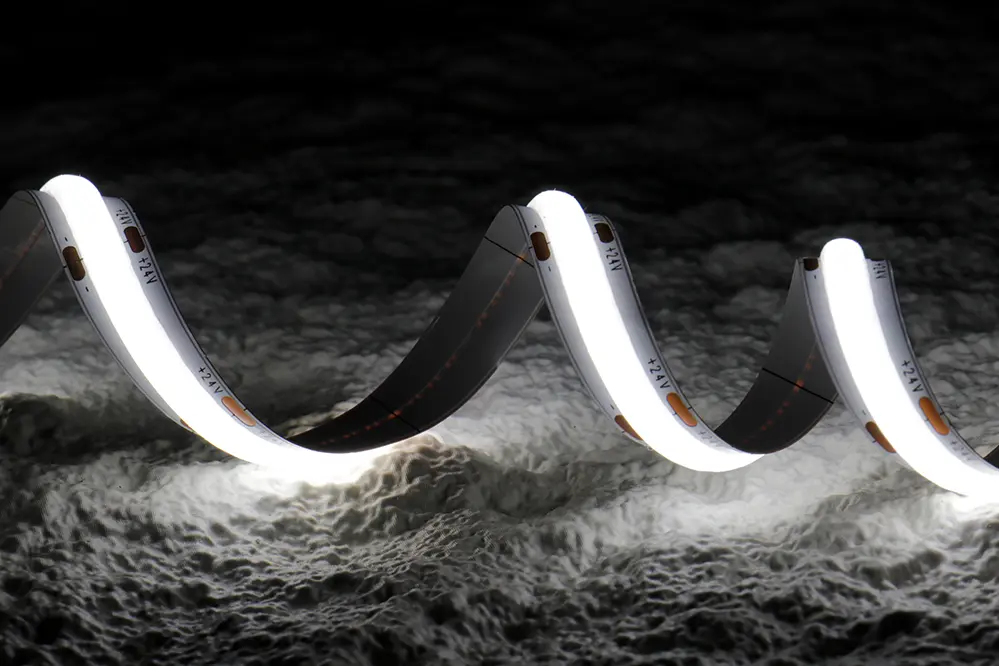
Innovative LED light technology has revolutionized lighting, yet its interactions with audio systems warrant careful consideration and selection.
The quality of LED lights manifests as a crucial factor influencing speaker performance, where subpar components may introduce noise. LEDs lacking proper electromagnetic shielding can sometimes emit interference, which travels through electrical circuits, causing disturbances, such as speaker buzz. By investing in LED lights with superior circuitry and EMI shielding, one can avert such interference and maintain sound clarity.
Moreover, opting for LEDs that adhere to stringent quality standards ensures a cleaner and more consistent power flow. This attentiveness to electrical integrity guards against sudden surges that might disrupt speaker operation, safeguarding both sound quality and equipment longevity.
Ultimately, making informed choices regarding LED light quality can markedly transform the auditory experience. Quality lighting solutions designed with advanced interference-resistant technology can coexist harmoniously with sensitive audio setups. Thus, knowledge and proactive selection empower you to enjoy both state-of-the-art lighting and pristine sound without compromise, ushering in an era of seamless coexistence between visual and auditory elements in your space.
Conclusion
The challenge of LED lights causing speakers to buzz is an opportunity for innovation and technological advancement. This interference, often due to electromagnetic disruptions, calls for a strategic approach to ensure harmony between lighting and audio systems. By investing in high-quality LED lights and implementing dedicated circuits, manufacturers and consumers can effectively eliminate this buzz. Such measures not only enhance the auditory experience but also reflect a commitment to creating environments where technology works seamlessly together.
Understanding the interactions between LED lights and speakers is crucial for fostering smarter technology choices. By addressing these issues, we pave the way for sound systems and LED lighting to coexist flawlessly, elevating the ambiance of any space. This proactive approach inspires excellence in every auditory-visual environment, ensuring that technological integration enhances user experiences. As we tackle these challenges, we set the stage for a future where innovation and user satisfaction go hand in hand.
